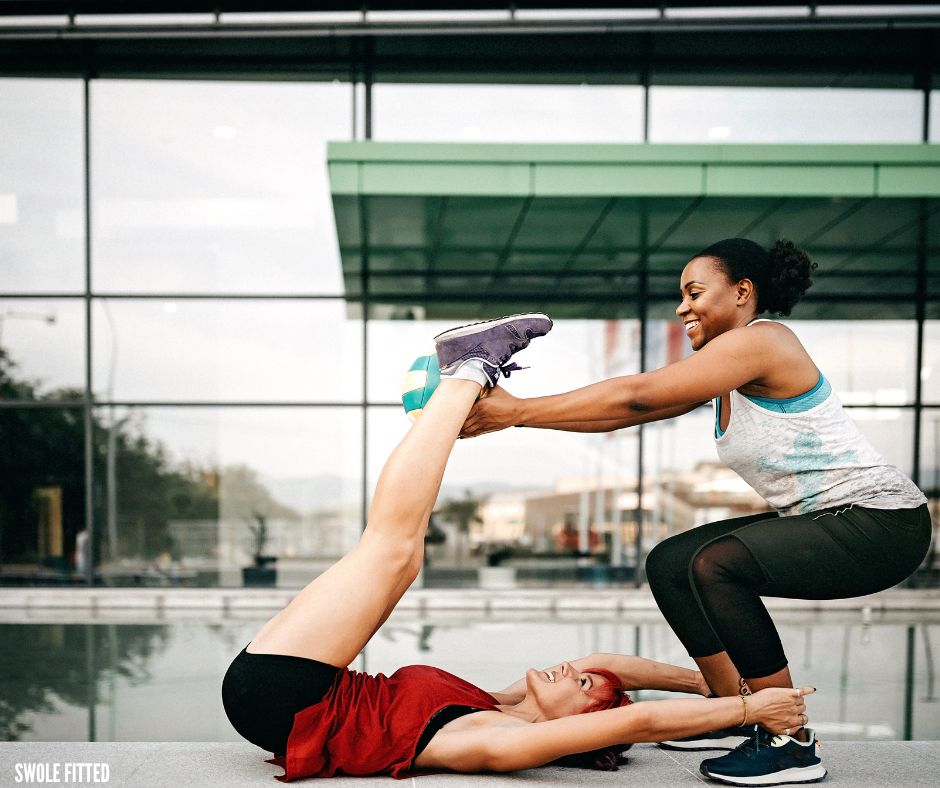A proper warm-up and cool-down are essential components of any effective workout routine, yet they are often overlooked. At Swole Fitted Training, we emphasize the importance of these practices to prevent injuries, improve performance, and enhance recovery.
Here’s why dynamic warm-ups and structured cool-downs should be an integral part of your fitness regimen.

The Importance of Dynamic Warm-Ups
1. Increases Body Temperature. Warming up increases your body temperature, which improves muscle elasticity and reduces the risk of strains and other injuries.
2. Enhances Muscle Performance. Warmed-up muscles can contract more forcefully and relax faster. This not only improves your speed and strength but also helps prevent injuries by making the muscles more responsive.
3. Boosts Blood Flow to Muscles. Increasing blood flow ensures that your muscles are receiving more oxygen and nutrients, which can enhance performance.
4. Prepares Your Cardiovascular System. Gradually increasing your heart rate during the warm-up helps ease the body into a state of exercise, reducing stress on the heart.
5. Mental Preparation. A dynamic warm-up also helps you mentally prepare for the upcoming session, focusing your mind on the physical activity ahead.
Examples of Dynamic Warm-Up Exercises
- Leg swings
- Arm circles
- Lunges with a twist
- Inchworms
- High knees
The Benefits of Cool-Downs
1. Aids in Recovery. Cooling down helps gradually reduce heart rate and breathing, promoting quicker recovery.
2. Reduces Muscle Stiffness. Gentle stretching after exercise can help reduce muscle stiffness and soreness, which might occur if you skip cooling down.
3. Helps Remove Waste Products. A cool-down aids in the removal of waste products, such as lactic acid, which can build up during vigorous activity.
4. Prevents Blood Pooling. Gradually decreasing your exercise intensity can help prevent blood from pooling in the veins of your exercising muscles, which can cause dizziness or fainting.
Examples of Cool-Down Exercises
- Walking or light jogging
- Static stretches (holding a stretch for 10-30 seconds)
- Gentle yoga poses
- Deep breathing exercises
Incorporating Warm-Ups and Cool-Downs Into Your Routine
To get the most out of your workout, aim for a 5-10-minute dynamic warm-up before you start your main exercise routine. Similarly, spend about 5-10 minutes cooling down with light activity and stretching.
By incorporating these essential practices into your fitness routine, you not only enhance your performance but also contribute significantly to injury prevention and quicker recovery. Make dynamic warm-ups and structured cool-downs a non-negotiable part of your workout to maximize effectiveness and safety.
Stay tuned for our next blog post where we will delve into the significance of hydration during exercise. With Swole Fitted Training, every aspect of your workout is geared towards achieving optimal health and performance.



